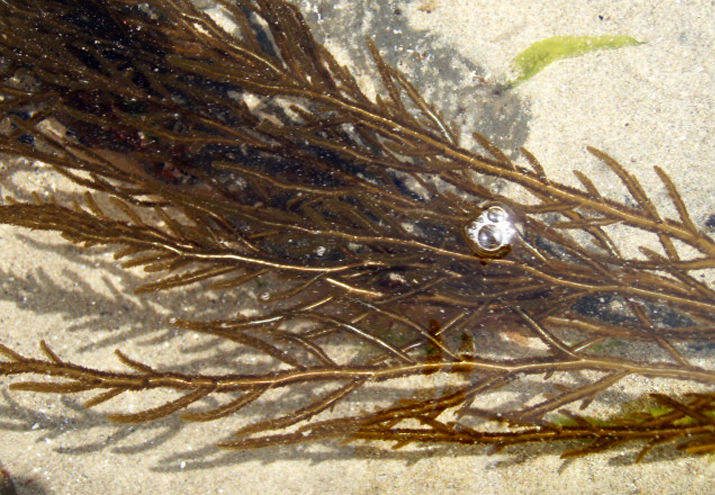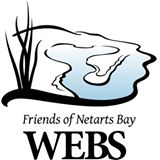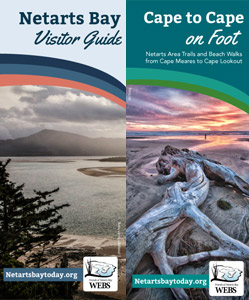Nereocystis leutkeana
Bull Kelp
Aleutian Islands, Alaska to central California
Family Laminariaceae
Nereocystis leutkeana is the most impressive brown seaweed in the Pacific Northwest. The genus name comes from Nereidos, the name of a sea nymph from Greek mythology, and from “kytos”, Greek for a hollow vessel. There is only one species. This seaweed often grows in “beds”, that is dense assemblages, often in rather protected waters, but sometimes along the highly energetic outer coast. We don’t find it growing much between the Capes, but we do see it washed up on our beaches in massive tangled windrows after it has been torn from rocks during winter storms. Nereocyctis consist of a holdfast, a long, tapering, hollow stipe that can reach more than 100 feet, a terminal gas-filled floating bulb, the pneumatocysts, and the attached blades. The anchoring holdfast can reach a diameter of more that a foot. It can harbor its own collection of organisms by offering them protection among the haptera. The pneumatocyst and the expanded hollow part of the stipe serve as a float to keep the alga vertical. The blades branch off the pneumatocyst in two cliusters of up to 30 blades each. These blades, which hang down from the floating pneumatocyst like curtains, contain spore-forming cells arranged in patches called sori. Interestingly, the sori are released from the blades during the autum at specific times of the day and tidal cycle, and they sink to the bottom where the spores are released to develop into gametophytes.
There are numerous other interesting aspects to this kelp. The gasses in the pneumatocyst includes up to 12 percent carbon monoxide (the same poisonous gas released by automobile exhaust), in addition to nitrogen, oxygen and carbon dioxide found in air. Nereocyctis is an extremely fast growing kelp. It is an annual with some individuals persisting over the winter. But it reaches its full size within its first year, growing over 5 inches per day. The shape of the blade can be determined by the amount of current in which the kelp lives. Narrow, flat blades with less drag develop where there is fast current; ruffled blades that spread out develop in slower currents.

































